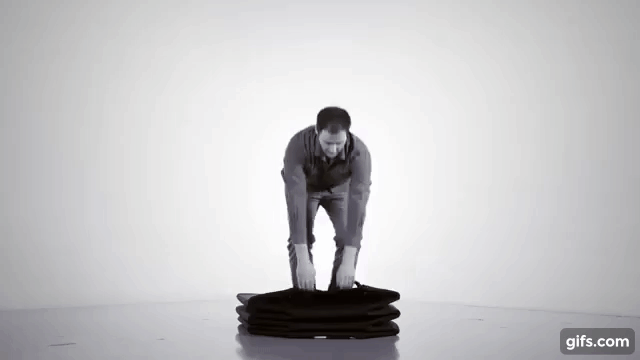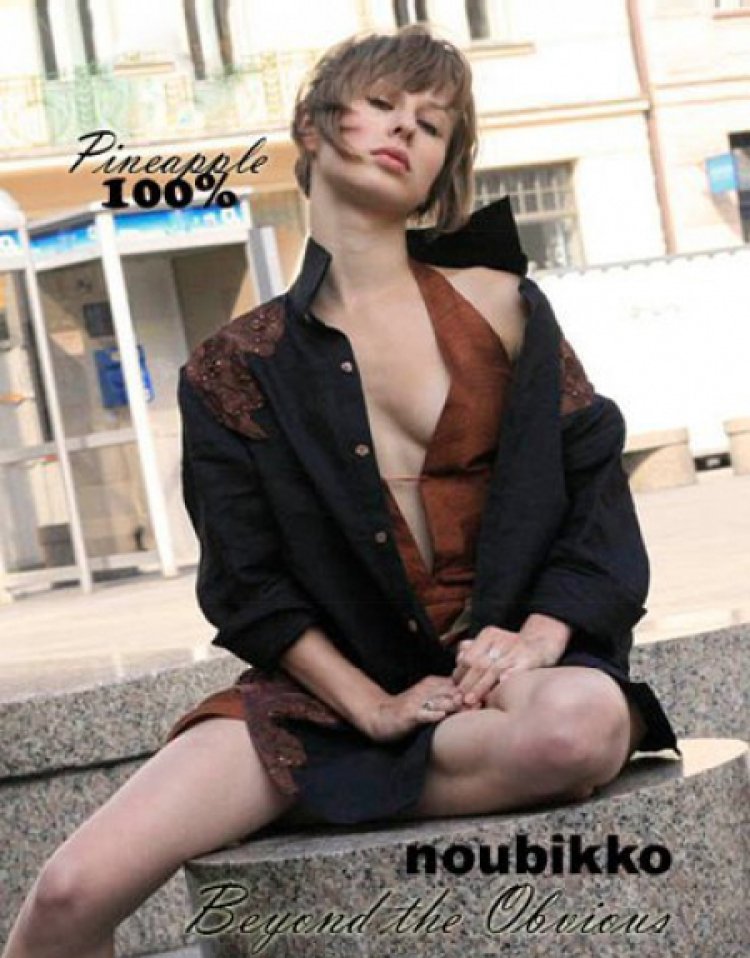Subjective Reality: Larry Fessenden on Crumb Catcher, Blackout, and Glass Eye Pix
As the founder of Glass Eye Pix, writer-director Larry Fessenden has spent nearly four decades carving out a fiercely independent niche in American cinema—not only for himself, but also for the array of talented artists whose careers he’s supported through his storied New York film studio. Since “No Telling,” his first feature on film, Fessenden has plumbed the depths of human psychology and interrogated our relationship to the natural world within chilling, atmospheric horror features. To that end, “No Telling,” sold internationally as “The Frankenstein Complex,” smuggled critiques of big pharma and animal testing into the body of a monster movie. “Habit” came next, its vampirism-as-disease allegory suffusing a despairing tale of alcohol dependency and urban decay in mid-1990s New York. In “Wendigo,” a family vacationing upstate encounters a Native American legend, Fessenden depicting family tragedy through a child’s eyes; in “The Last Winter,” an oil drilling crew succumbs to unstoppable forces in the Alaskan wilderness; and in “Depraved,” an Iraq war medic processes trauma by stitching together a man from body parts in a Brooklyn loft. Fessenden’s latest, the werewolf feature “Blackout,” is equally grisly and engaged, weighing civic responsibility and addiction issues alongside lycanthropic carnage. Though Fessenden founded Glass Eye to copyright his own films, it’s since expanded into an artists’ collective of sorts. Kelly Reichardt made “River of Grass,” her debut feature, with Fessenden starring, editing, and producing; he also produced “Wendy and Lucy” and executive-produced “Night Moves” and “Certain Women.” Ti West saw “Habit” in high school and kept asking about Fessenden while taking a class taught by Reichardt at the School of Visual Arts in New York. On her reference, West interned at Glass Eye; Feessenden produced his debut, “The Roost,” and others, up through “The House of the Devil.” For directors like Jim Mickle (“Stake Land”), Glenn McQuaid (“I Sell the Dead”), and James Felix McKenney (“Automatons”), Fessenden’s production banner has similarly been a safe haven from which to start. “I don’t even know what Glass Eye Pix is,” Fessenden confesses during a recent visit to Chicago in support of “Crumb Catcher,” the studio’s latest (out on VOD today via Doppelgänger Releasing). “It’s a place where filmmakers can come if I feel they have this spark of looking to use the genre to tell something personal, honest, and authentic. But that doesn’t mean there are any rules.” The feature debut of Chris Skotchdopole, who shares story credit with Fessenden and lead actor Rigo Garay, “Crumb Catcher” centers two newlyweds, Leah (Ella Rae Peck) and Shane (Garay), who travel to a remote estate in upstate New York for their honeymoon, only for two uninvited guests (John Speredakos and Lorraine Farris) to plunge the getaway into a bizarre, uncomfortable ordeal. A chaotic, high-speed collision of psychodrama and perverse tragicomedy, Skotchdopole’s debut reflects his past decade spent working under Fessenden at Glass Eye Pix in more ways than one. Last month, Fessenden, Skotchdopole, Garay, and producer Chadd Harbold traveled to Chicago’s Music Box Theatre to introduce a screening of “Crumb Catcher” and participate in a post-film Q&A. Fessenden sat down that evening to discuss his own oeuvre and secret to nurturing the next wave of indie-horror iconoclasts. This interview has been edited and condensed. You have a history with Chicago. “Habit” premiered at the Chicago International Film Festival in 1995, which resulted in some strong early reviews and encouragement as you shopped the film to distributors. What do you remember about that experience, and what role it played in getting the film released? We made “Habit” with five crew members, including myself and the DP. Two kids took the train to New York to start their careers, and one was from Chicago: Jay Silver, the assistant cameraman. When we came to be in the Chicago International Film Festival, it was sweet. He was back in his hometown. I just remember what a great town it was. I love jazz. I love music. FACETS came into the story of “Habit” a year later. But the truth is, I’d already had some of my videos distributed there, really homemade videos, and they were on the video shelf under Indie Film. I was always aware of Chicago as more supportive than my own hometown of New York City. We played “Habit” at the festival, and we got a blurb from Roger Ebert that said the film was pretty cool. You could live and breathe off that quote for a long time. [Eds. note: Ebert expanded on the blurb in question, which praised Habit as a “strong, bleak film,” with a full review upon the film’s release.] A year later, Charles Coleman from FACETS called me, and he asked, “What’s going on with that vampire movie?” I said, “Well, I never could sell it. I don’t know quite what went wrong.” Abel Ferrara’s “The Addiction” and Michael Almereyda’s “Nadja” had both go


As the founder of Glass Eye Pix, writer-director Larry Fessenden has spent nearly four decades carving out a fiercely independent niche in American cinema—not only for himself, but also for the array of talented artists whose careers he’s supported through his storied New York film studio.
Since “No Telling,” his first feature on film, Fessenden has plumbed the depths of human psychology and interrogated our relationship to the natural world within chilling, atmospheric horror features. To that end, “No Telling,” sold internationally as “The Frankenstein Complex,” smuggled critiques of big pharma and animal testing into the body of a monster movie. “Habit” came next, its vampirism-as-disease allegory suffusing a despairing tale of alcohol dependency and urban decay in mid-1990s New York.
In “Wendigo,” a family vacationing upstate encounters a Native American legend, Fessenden depicting family tragedy through a child’s eyes; in “The Last Winter,” an oil drilling crew succumbs to unstoppable forces in the Alaskan wilderness; and in “Depraved,” an Iraq war medic processes trauma by stitching together a man from body parts in a Brooklyn loft. Fessenden’s latest, the werewolf feature “Blackout,” is equally grisly and engaged, weighing civic responsibility and addiction issues alongside lycanthropic carnage.
Though Fessenden founded Glass Eye to copyright his own films, it’s since expanded into an artists’ collective of sorts. Kelly Reichardt made “River of Grass,” her debut feature, with Fessenden starring, editing, and producing; he also produced “Wendy and Lucy” and executive-produced “Night Moves” and “Certain Women.” Ti West saw “Habit” in high school and kept asking about Fessenden while taking a class taught by Reichardt at the School of Visual Arts in New York. On her reference, West interned at Glass Eye; Feessenden produced his debut, “The Roost,” and others, up through “The House of the Devil.” For directors like Jim Mickle (“Stake Land”), Glenn McQuaid (“I Sell the Dead”), and James Felix McKenney (“Automatons”), Fessenden’s production banner has similarly been a safe haven from which to start.
“I don’t even know what Glass Eye Pix is,” Fessenden confesses during a recent visit to Chicago in support of “Crumb Catcher,” the studio’s latest (out on VOD today via Doppelgänger Releasing). “It’s a place where filmmakers can come if I feel they have this spark of looking to use the genre to tell something personal, honest, and authentic. But that doesn’t mean there are any rules.”
The feature debut of Chris Skotchdopole, who shares story credit with Fessenden and lead actor Rigo Garay, “Crumb Catcher” centers two newlyweds, Leah (Ella Rae Peck) and Shane (Garay), who travel to a remote estate in upstate New York for their honeymoon, only for two uninvited guests (John Speredakos and Lorraine Farris) to plunge the getaway into a bizarre, uncomfortable ordeal. A chaotic, high-speed collision of psychodrama and perverse tragicomedy, Skotchdopole’s debut reflects his past decade spent working under Fessenden at Glass Eye Pix in more ways than one.
Last month, Fessenden, Skotchdopole, Garay, and producer Chadd Harbold traveled to Chicago’s Music Box Theatre to introduce a screening of “Crumb Catcher” and participate in a post-film Q&A. Fessenden sat down that evening to discuss his own oeuvre and secret to nurturing the next wave of indie-horror iconoclasts.
This interview has been edited and condensed.
You have a history with Chicago. “Habit” premiered at the Chicago International Film Festival in 1995, which resulted in some strong early reviews and encouragement as you shopped the film to distributors. What do you remember about that experience, and what role it played in getting the film released?
We made “Habit” with five crew members, including myself and the DP. Two kids took the train to New York to start their careers, and one was from Chicago: Jay Silver, the assistant cameraman. When we came to be in the Chicago International Film Festival, it was sweet. He was back in his hometown. I just remember what a great town it was. I love jazz. I love music.
FACETS came into the story of “Habit” a year later. But the truth is, I’d already had some of my videos distributed there, really homemade videos, and they were on the video shelf under Indie Film. I was always aware of Chicago as more supportive than my own hometown of New York City. We played “Habit” at the festival, and we got a blurb from Roger Ebert that said the film was pretty cool. You could live and breathe off that quote for a long time. [Eds. note: Ebert expanded on the blurb in question, which praised Habit as a “strong, bleak film,” with a full review upon the film’s release.]
A year later, Charles Coleman from FACETS called me, and he asked, “What’s going on with that vampire movie?” I said, “Well, I never could sell it. I don’t know quite what went wrong.” Abel Ferrara’s “The Addiction” and Michael Almereyda’s “Nadja” had both gotten into Sundance: two low-budget East Village vampire movies, both black-and-white. Maybe the world of festivals felt they’d had enough, so my film had been overlooked. Charles asked, “What if we programmed your movie?” We got a weeklong run at FACETS. We got really fine reviews, which in those days was very special, because you read them in the newspaper. I’ll never forget it. That launched the movie.
I became an independent distributor, because I didn’t have a distributor, but I had these reviews, and I started building what became the model of Glass Eye Pix: Fight for your own movies. If they’re good enough, forge your own path. I got to know booking agents in all the towns. We went to the Laemmle Theatre in LA. Ed Arentz—actually a co-founder and managing director of Music Box Films—was in New York at the time, at Cinema Village, where we opened. The story goes on, but the point is, this town is very seminal to my story and started the methodology that I have continued to this day.
Glass Eye Pix is about to turn 40, and its influence is all over. Ti West just made “X,” “Pearl,” and “MaXXXine.” Kelly Reichardt’s “Showing Up” premiered in competition at Cannes. As an incubator for independent artists, the studio has been remarkably productive. What’s your approach to supporting and mentoring filmmakers?
I always say that I don’t mentor. I recognize passion and individual vision, then I try to facilitate that, to think outside the box—even if it’s just a matter of not having to schedule [a production] in 16 days at a certain budget, because we can instead take time to marinate. That was the case with Chris, on “Crumb Catcher.” He worked for me for 10 years; in that time, he slowly seduced me into talking about his damn movie. We’d go out for a beverage, and we’d talk about it; we got into writing rooms, and I was just a sounding board.
All the while, I’m very aware each individual artist has a different approach. Ti is so smart; he’s very zip-zip-zip, and he starts quickly to understand how it’s going, whereas I might say Chris is all about marination, endlessly talking through and through and through. That’s just two. Kelly Reichardt is an example of somebody with whom you slow down the pace. I have my own style of editing, but I edited “River of Grass,” and I had to put on the hat, listen to what she wanted, and then offer her ideas based on her worldview and her artistic sensibility — this is my great pleasure.
Graham Reznick, Ti’s comrade from childhood, came into our shop. I’d let him use one of the rooms, and he'd do his work, and we’d write together, but he was also our sound guy. It’s not so much mentorship. It’s building a community and making sure everybody’s helping the other guy out. Jim Mickle used Graham to build the sound effects for “Stake Land.” It’s my love of community, and also my love of all the potential in the genre. I can’t make a zombie movie, a crazy bat movie, and all those other movies as a filmmaker, but I can jive with somebody finding authenticity in that. It has to do with a tactile quality, which has to do with low-budget.
I used to say my movies were “B-movies with A-movie themes.” I’m making movies about climate change that are also monster movies. In his own way, with Ti, if you think of “The House of the Devil,” the texture is what it’s about. Who cares about the devil worship? It’s about her on the phone, how long the phone cord is, the anxiety of ordering pizza then hearing a knock at the door. That’s what the movie’s about; that’s where he’s a brilliant filmmaker. As far as advocating for filmmakers, the distributor wanted to cut four minutes from the beginning; it was this great struggle. You’ve got to defend the artist. That’s what I believe in: defending the art, because resonance lives in what they want to fight for. That’s where their heart lies, and that’s where it’s going to be specific and unique, rather than just what’s expected.
I very often let people out of the nest by the time they become ambitious enough and frustrated in the sense that they want more money. The irony is that I’ve remained in that world because of my own problems with raising money. I’m not going to take no for an answer. If you want to make this movie, you’ve got to figure out, possibly, how to do it cheaper. That doesn’t mean compromise. It means rethinking, maybe new inspiration.

Was that the case with “Crumb Catcher” as well?
For “Crumb Catcher,” we did have a wonderful, remarkable cast that had committed, to whatever degree, but we still didn’t get the money, so we decided, “Let’s do it a different way.” That’s when Chris engaged with Rigo and John Speredakos, who were always there. Rigo has worked for me for 10 years; John has been in my movies since “Wendigo.” That’s also part of my philosophy of the world: don’t always aspire to what’s beyond you. Find your community. Find the people around you. They are the love that’ll make this happen.
In a weird way, Chris knew that’s how he wanted to work. He wanted endless rehearsals, which I’ve come up against as an issue when you get bigger. I made a great film, which is to say, I had a great time making a film, called “The Last Winter,” with Ron Perlman, James Le Gros, Connie Britton, and Kevin Corrigan, all wonderful actors. As soon as you get agents involved, there is no rehearsal. I asked for three days of rehearsal. That seemed crazy to them; Ron was like, “I’ll see you on day one.” Of course, we jived, and I like to work quickly. I’m different from Chris in that way.
The agenda is about developing a philosophy that allows you to go bang when the time comes. That’s what I encourage. I’ve not mentored these people; I’ve enabled them, and a lot of these filmmakers have been good enough to punch through when given that encouragement. I always wish I’d had that, so I provide for others; that is how my karma settles. That’s what’s going on. There is a perspective on how to make movies that I impart but, as I say, I’m not really telling people how to work. With Kelly Reichardt, I have given her money to go to locations. I told her to go out and explore, and that’s what I could give her. I couldn’t give her the budget, but I could give her that. It’s when the movie is still a risk that I like to get in there. That’s what I mean by encouragement. You have to put your money where your mouth is, at a certain point. But my producing gives them the comfort and freedom to dream.
With “Crumb Catcher,” what we did is build the prop of the actual crumb catcher device. We had a great artist, James Siewert, who shot my film “Depraved” with Chris—two DPs on that one. I said, “Let’s put the money there. I can’t finance your movie. That’s a whole other lift.” Chris was working on finding that budget, so I said, “Let’s work on the prop. It’ll help us get our hands into the clay, to start building this movie.” I always call it “building.” I love to think of it that way. It’s more about the construction.
Though you and Reichardt work in separate genres, you share a patient, observational style of filmmaking. “Wendigo” is so carefully crafted; your use of montage, time-lapse photography, and freeze-frame gorgeously evokes nature’s power. It’s clear from all your films that you care deeply about a certain potency of atmosphere.
I brought Jay Silver, my Chicago pal, onto “Wendigo,” and I said, “I want you to go out into the woods, in the snow, and I want you to give me these animations.” He’d go out with War and Peace, sit out there for five or six hours, and come back with 10 seconds of film. [laughs] To me, that sense of nature is more the Wendigo than even my little stick monsters. I have a disdain for humanity, so then you’re left with, “Well, what do I like?” [laughs] Within my engagement with the world, I love the majesty of nature.
“Wendigo” is about our need for mythology, our need for stories. The kid conjures up a beast that will be an avenging angel when he realizes there’s violence in the world and his father is not the most powerful force in the world. It’s about the tragedy of growing up. These are the themes that interest me. “Habit,” of course, is about an alcoholic, but he wants to believe, “Oh, my real problem is my girlfriend's a vampire,” and you don’t really know whether that’s true or not. I’d like to say that you could enjoy it as a vampire movie, but you’re nagged by the idea of, “Or is he just a total mess?” It’s a movie about loneliness; when he reaches out, it’s to his drinking buddy, and you realize all they have is their drinking. He says he feels scared, and the guy says, “Let’s go have a drink.” It’s so sad, so hard to communicate. These are themes that interest me. “The Last Winter” is about the self-betrayal of climate change: “What have we done to ourselves?” These are my questions at the end of my films. In that way, I used to say that my movies were philosophical horror, because I’m not delivering in the splatter category.
I know people find my movies boring. So be it. Film is tactile. I want to treat it like pop-art, where the rhythm of the edit is actually what sits in your mind. I would shoot performance art; I shot weddings. I love shooting what’s out there, and it’s about the way you interpret it. It’s your eye, engaged with the world, and it’s a very aesthetic engagement. I’m not just a storyteller. In the old days, it was easier, because you’d go to a shop, you might pull out some postcards, and you’d have images. Now, I’m afraid you tend to go to the internet and search for “spooky trees,” and then you get the same spooky trees that every other spooky-tree guy is getting. [shudders]

Your latest film, “Blackout,” moves that engagement forward in that your protagonist is a painter focused on nature scenes whose work becomes more violent and abstract as he transforms into a werewolf. You’re capturing this downward spiral through the eyes of an artist, and the horror of “Blackout” is often in his gradually darkening impression of the world and himself.
I want to remind myself of painters that matter to me, of Andrew Wyeth or Edward Hopper, who portray loneliness. I want to engage with other art forms. The only reason I make movies is that I love the medium. Honestly, it’s a pain in the ass, with the whole specter of success, and how you’re interpreted, with bad or snarky reviews. You’re like, “Oh my god! I’m so sorry you were bored, motherfucker! Watch something else.” I mean, whatever. Just leave me alone, you know? It’s such a snarky world right now. Can we open ourselves up?
I’m not like Kelly Reichardt, but we have the same agenda of saying, “Can we bear witness to this life of ours? It’s very fleeting.” I lean into the horror of that. I’m a paranoiac and I’ve always been acutely aware that you could drop dead. That’s what I love about horror: an ax murderer could come at you, or you could get the cancer. It could be a slow or sudden death; the shark could get you. It’s so scary out there. That’s why I make horror movies. People say I should make comedies, because I’m a silly person. Haha!
This is the power of horror: as a mirror. People always say it’s perennial, and they act so stupid as to why. Horror is the one emotion that’s consistent. Love stories come and go, but there’s always horror, whether it’s torture during the Bush years or the core despair of a country flattened in Godzilla movies. Around the time of the original Frankenstein movies, soldiers were coming back from World War I, completely disfigured. If you haven’t, read “The Monster Show” by David J. Skal. Rest his soul. He got killed in a car accident last January.
In “Crumb Catcher,” there’s also that idea of home invasion, which carries a post-9/11 resonance in how it exploits our fears of being attacked on our home turf; that subgenre exploded in the 2000s, in films like “The Strangers” and “Funny Games.” But there’s an absurdity to “Crumb Catcher,” as well. I’m curious about that balance between strange comedy and life-or-death stakes.
Much of what Chris wants to express is very personal in terms of making the relationships real. With Leah and Shane, he used this idea of, ‘What if you didn’t want to be at your wedding?’ I’m not going to psychoanalyze Chris, but his agenda was to find the nuances of their secrets and motivations, to find psychological realism. His family is involved in film, and he loves all different kinds of movies—not just art films but films like Martin Scorsese’s “Cape Fear.” He’s a modern filmmaker. There’s something very personal about what he’s trying to do; he wants to draw on his relationships and bring them into his psychosis. He wants to understand what his impulses are. He also has a very healthy understanding of the thriller genre, which is where home invasion comes in, but it’s deeply character-motivated.

One element of “Blackout” that recurs in your other films, and that extends to “Crumb Catcher,” is memory loss and the lack of control that comes with it. Obviously, this goes back to “Habit,” and its treatment of alcoholism. How do you feel your exploration of this theme has evolved?
Ultimately, my interest is subjective reality. In the end, that would be my philosophical perspective: that we’re all just seeing the world from our own point of view. It’s hard to connect, and that’s why connection is profound and wonderful. Very often, a story that I’m telling is more about a lack of connection. As far as alcoholism goes, that’s just something I want to be honest about in my life. I’m not out of control, but I’ve always had a relationship with booze since I was young. I’m suppressing something. I’m punishing myself. I think that’s interesting.
That’s what Shane is doing in “Crumb Catcher,” and what’s happening in “Blackout.” What is a werewolf? It’s somebody who feels like they’re out of control, then they have remorse all day. Once again, these aren’t particularly my problems, but I have access to those problems because I understand them. I grew up in the East Village, in rock ‘n’ roll, surrounded by heroin addicts. I was never into that, but I could see it. The world is a very despairing, and everybody’s trying to take hold. That’s why substance abuse and self-medication are part of my stories.
When you talk about a monster movie, you’re talking about somebody who feels like a monster. This is recurring. “Depraved” is very tender; it’s not a metaphor for alcoholism, but it’s certainly about somebody who feels misunderstood. I’ve been making identity movies for a long time, really: who am I? It’s hard to understand who you are. I’m trying to evoke how I think we all feel. We all feel insecure, ugly, inadequate. This is humanity. How you deal with it is the issue; you can resort to booze, or you can lash out.
I consider the character John Speredakos plays in “Wendigo” to be connected to the one he plays in “Crumb Catcher.” In “Wendigo,” he feels a grievance. He feels his childhood home is now a yuppie retreat, so he shoots up the house. He’s just angry. In a way, I would like to argue that I was anticipating where we are with the culture now, that we’ve got this red-state/blue-state problem because people feel displaced and disrespected. At the core of “Wendigo” is, of course, that all of those people have displaced the Native Americans. This is what happens, this cycle of abuse and displacement, and it’s the sadness of the world that new powers come in. How do we reconcile that? In “Wendigo,” I didn’t have an answer. I think we’re trying to deal with that in our culture. I don’t know if we’re doing it right, but the point is, it’s a real issue. And then you have our political world based on grievance and anger. “Wendigo” anticipated that. “Crumb Catcher” has that flavor.
Last question. I was delighted to see Adam, Alex Breaux’s character from “Depraved,” shamble his way into the world of “Blackout,” passing by Alex Hurt on the road during its post-credits scene. Are you moving forward with that next iteration of your relationship with the Universal Monsters, bringing those characters together with the “Habit” vampire?
Absolutely. When I was young, I said I would make a movie, and everybody was like, “Okay,” but it was very important for me to step up and say that. Years later, I became very shy because I didn’t want to be seen as a showman. Now, I’m saying, “Yes, I’m going to make a Monsterverse movie with all my monsters.” It’ll be a challenge because my stories are low-key; they’re not razzle-dazzle. How do you do the Universal Monsters treatment — “House of Frankenstein,” “House of Dracula” — with three different monsters from three movies that were never intended to be a universe? Yet, I love the challenge, so that’s what I’m going to try to do sooner than later because everyone’s going to grow up. I’ve got to get busy. That’s what I’m working hard on right now.
“Crumb Catcher” is available now on all VOD platforms, via Doppelgänger Releasing.




















